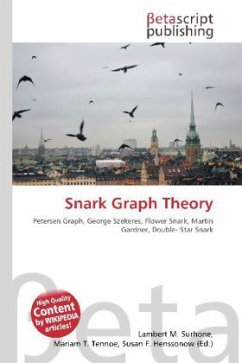Please note that the content of this book primarily consists of articles available from Wikipedia or other free sources online. P. G. Tait initiated the study of snarks in 1880, when he proved that the four color theorem is equivalent to the statement that no snark is planar.The first known snark was the Petersen graph, discovered in 1898. In 1946, Croatian mathematician Danilo Blanu a discovered two more snarks, both on 18 vertices, now named the Blanu a snarks.The fourth known snark was found two years later by Bill Tutte, under the pseudonym Blanche Descartes, and was a graph of order 210.In 1973, George Szekeres found the fifth known snark the Szekeres snark.In 1975, Isaacs generalized Blanu a''s method to construct infinite families of snarks : the flower snark and the BDS snark, a family that includes the Blanu a snarks, the Descartes snark and the Szekeres snark BDS stands for Blanu a Descartes Szekeres.Isaacs also discovered a 30-vertices snark that does not belong to theBDS family and that is not a flower snark: the double-star snark. Snarks were so named by the American mathematician Martin Gardner in 1976, after the mysterious and elusive object of the poem The Hunting of the Snark by Lewis Carroll.
Bitte wählen Sie Ihr Anliegen aus.
Rechnungen
Retourenschein anfordern
Bestellstatus
Storno








